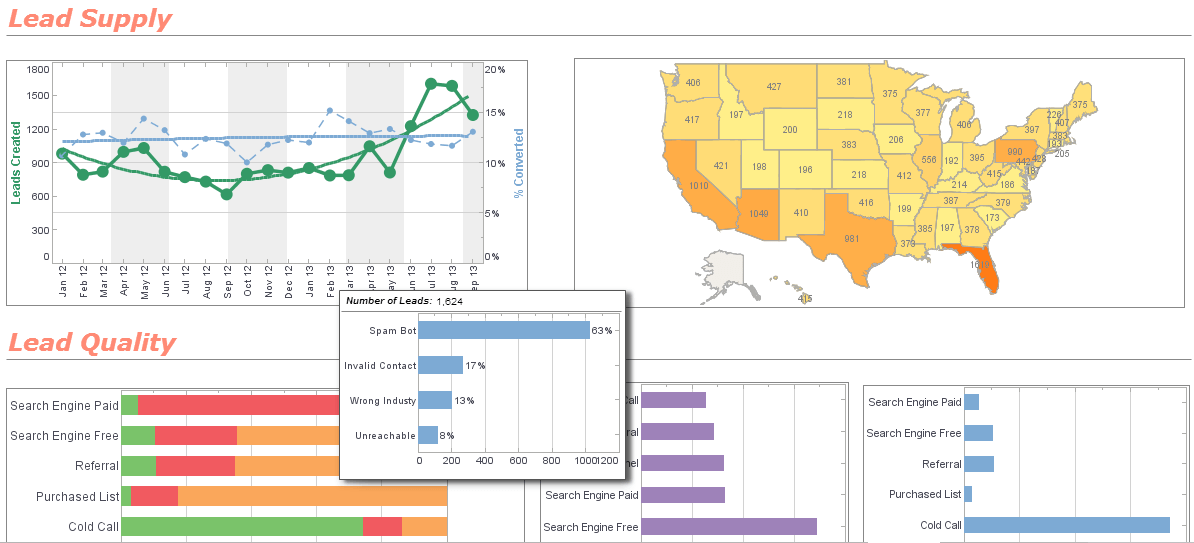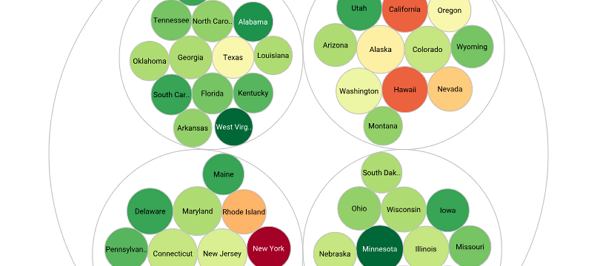InetSoft's Report Generator Software
InetSoft's report generator software is ideal for application developers to embed PDF and interactive reports into their industry-specific solution. Design professionals can easily mashup structured and non-structured data into business report documents. Sophisticated business logic can be programmed in JavaScript. An API allows for complete programmatic control.
All new clients and partners get free one on one report developer expert help to accelerate deployment.
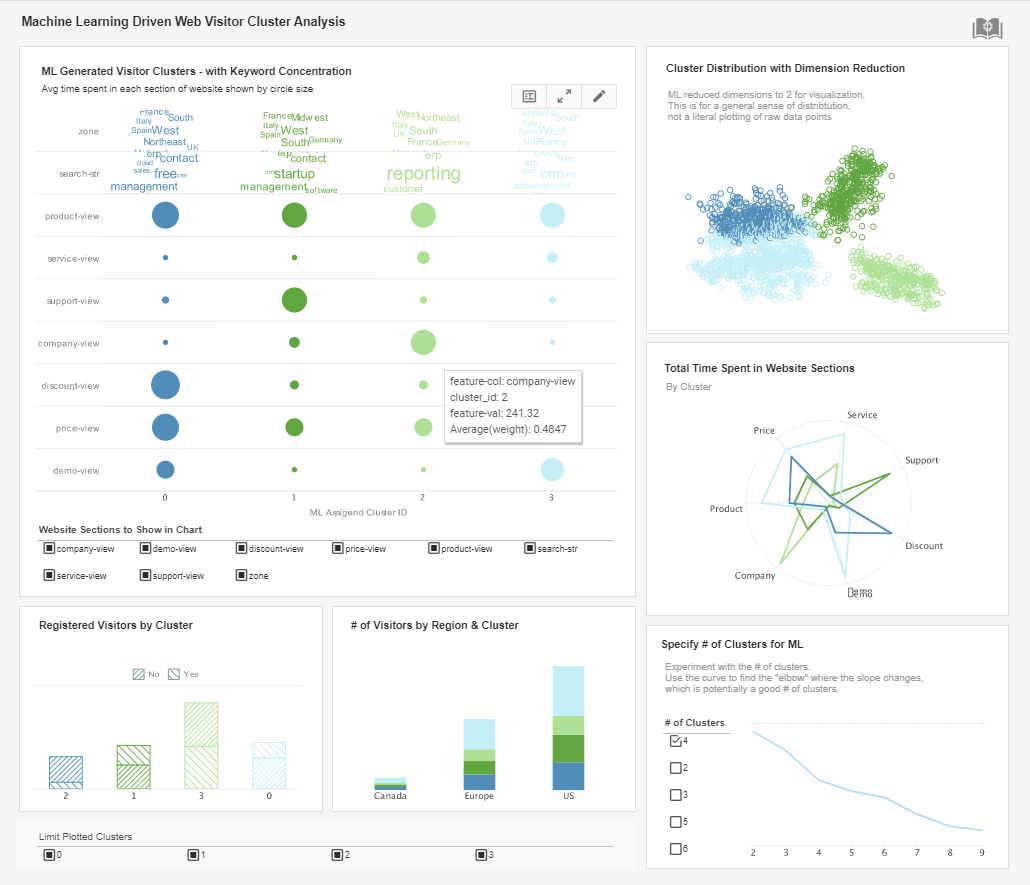
Report Generator Software Features
Both interactive and paginated reports can be created, to meet both regular and ad hoc needs. InetSoft’s report generator software provides multiple customizable options, with over 30 different chart types, a presentation element library, and subreport nesting.
In addition, with InetSoft’s automated report scheduling, managers no longer need to rely on employees remembering to publish certain reports at certain times. The scheduling function is enhanced by report bursting, a batch reporting feature in which many reports are generated offline as one large report, which are then internally segmented or “bursted”. Then, when users view this burst report, they will only see the segment of the report that targets them. Scheduling burst reporting allows for great reductions in the time it takes to generate large numbers of reports.
Ad-Hoc Report Generator Software
An “ad hoc” report displays information that has not already been integrated into a regularly scheduled report. It is so named because it is generated to address an ad hoc informational need, or to answer a question “as it comes”. InetSoft’s report generator software also allows for the ad hoc creation and modification of interactive reports, to help decision makers explore data and find new patterns.
The interactivity in InetSoft generated ad hoc reports provide a cost efficient and quick way to analyze data. Data can be explored through filtering by dragging and dropping components such as selection lists, crosstabs, and charts onto interactive reports, all in a web-based interface that can be accessed by anyone with a web browser. These reports are mobile accessible, can be viewed in real-time, and can also be exported via email, as well as server and client based printing.
Users can also use the drag and drop interface for creating data mashups. the merging of data sources without the middle step of ETL and data warehousing.
InetSoft’s report generator software is a flexible and efficient choice for any business. If there exists an excellent, easy-to-use software out there, why not take advantage of it?
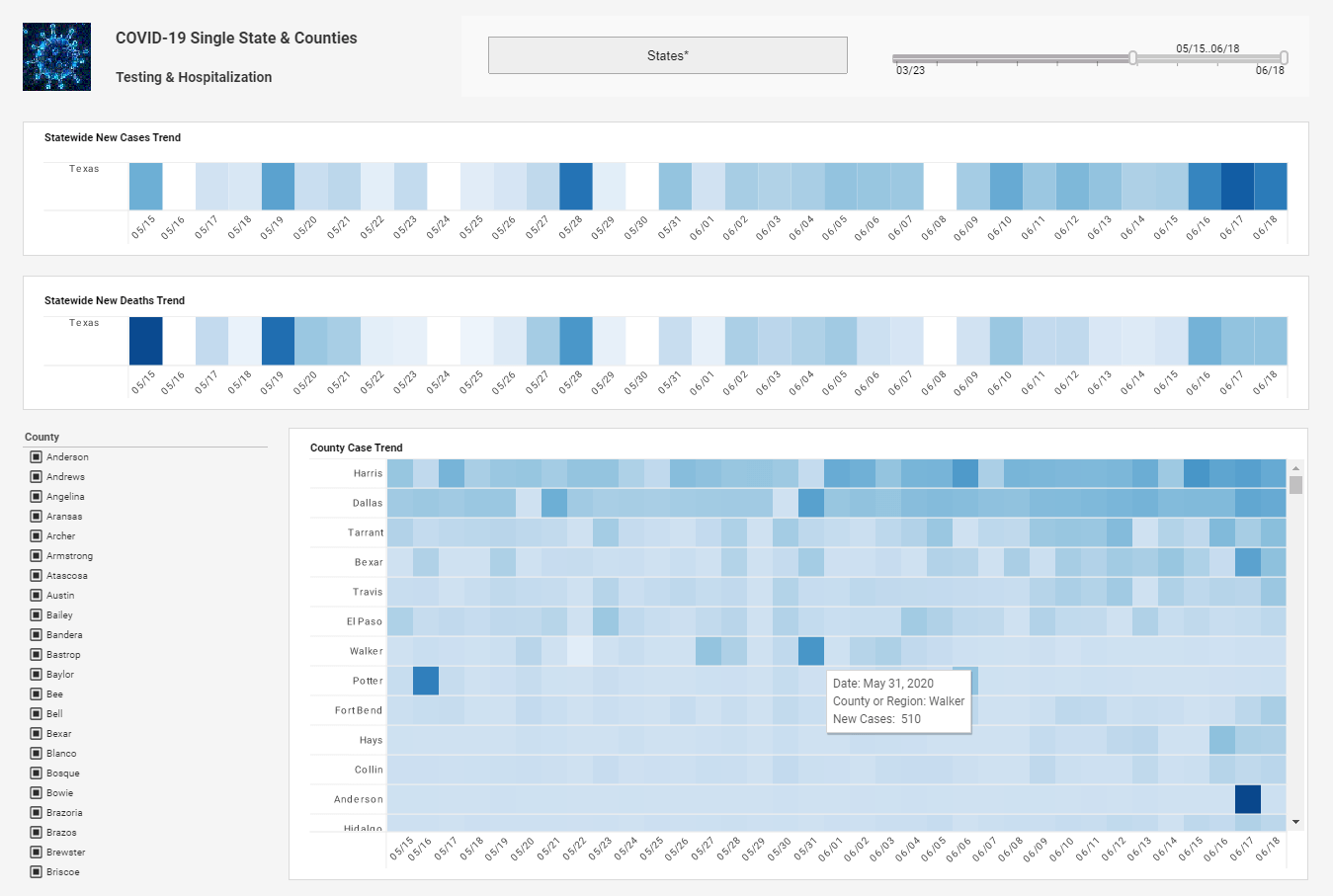
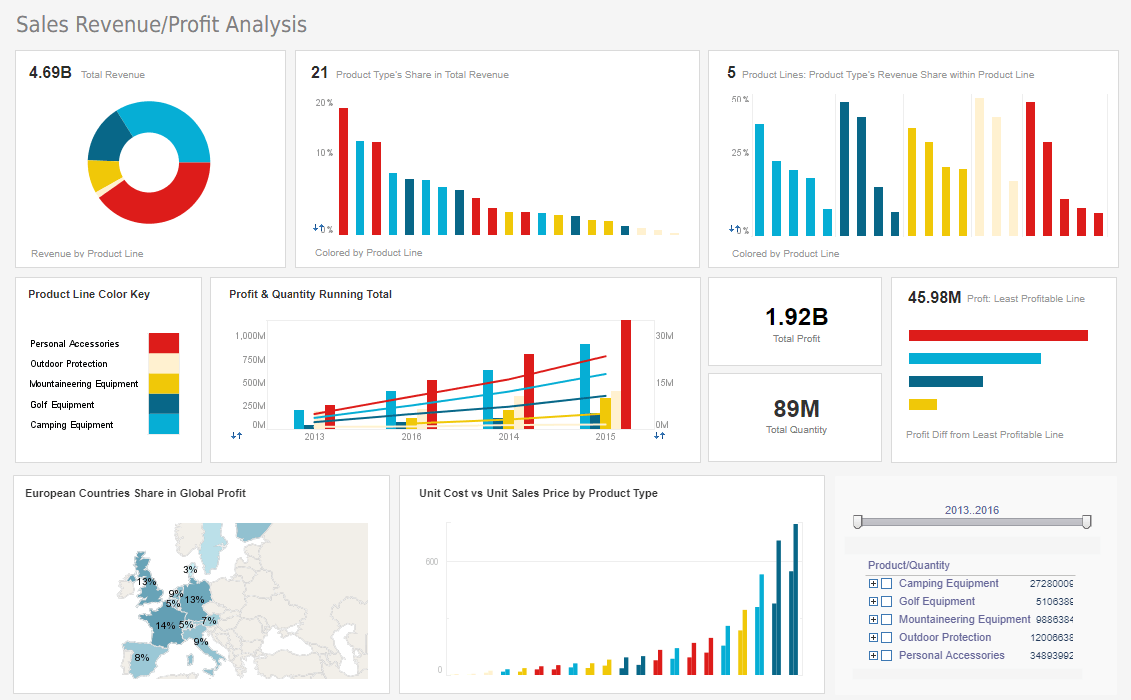
How an Barrel Maintenance Services Company Switched from Asana to InetSoft
Effervescence Barrel Maintenance Services (EBMS) is a niche company operating in one of the most obscure yet critical corners of the beverage industry—barrel upkeep for sparkling wine and champagne producers. While most consumers think of elegant bottles and crisp bubbles, they rarely imagine the infrastructure and labor behind maintaining the oak barrels used during fermentation and flavor development. EBMS works with wineries across Europe and the United States, providing services such as barrel inspection, cleaning, repair, and lifecycle analysis. The company has carved out a reputation for being indispensable to vintners who rely on the subtle interplay between oak and sparkling wines to create distinctive tastes. As EBMS grew, it faced increasing complexity in managing its operations. Initially, the company relied on Asana to track tasks, projects, and team collaboration. However, as clients demanded more detailed reporting, and internal operations became more data-heavy, Asana’s task management framework proved insufficient. To overcome these challenges, EBMS made the bold decision to adopt InetSoft as its central business intelligence (BI) and reporting platform, revolutionizing how it managed projects, tracked performance, and communicated with stakeholders.
For years, Asana had been an adequate solution for EBMS. The software allowed the team to manage work orders, schedule technicians, and break large projects—such as refurbishing hundreds of barrels for a seasonal vintage—into smaller, trackable tasks. It also helped coordinate logistics across multiple vineyards and facilities. However, Asana is primarily designed as a project and task management tool, not a full-fledged analytics and reporting environment. As EBMS grew, it became clear that what they needed went beyond checklists and task tracking. The company needed to tie its operations into financial data, client satisfaction surveys, barrel lifecycle analytics, and resource planning. Attempting to achieve this within Asana meant relying on disconnected exports and manually compiling reports in spreadsheets. This lack of integration wasted time and created a fragmented view of the business, limiting EBMS’s ability to scale effectively.
The transition to InetSoft began with a recognition that EBMS required more than just organizing tasks; it needed a platform that could turn operational data into actionable insights. With InetSoft’s ability to connect disparate data sources, EBMS was able to build dashboards that blended project progress with other key metrics. For instance, instead of just knowing that technicians had completed barrel inspections, managers could now see how inspection results correlated with barrel replacement costs, client satisfaction, and timelines for wine readiness. This level of integration gave EBMS a holistic view of operations that had been impossible under Asana’s siloed approach. For the first time, leaders could make decisions based on live, interconnected data rather than a patchwork of spreadsheets and static updates.
One of the most impactful changes came in the area of client reporting. Wineries depend on EBMS not only for technical services but also for assurances that their barrels are being managed optimally for quality production. Under Asana, the company could only share task completion reports, which were functional but limited. InetSoft allowed EBMS to provide clients with interactive dashboards that displayed the status of their barrels in real time. A vintner could log in and see how many barrels had passed inspection, how many required repair, and how much of their barrel inventory was nearing end-of-life. They could also track costs, timelines, and even sustainability metrics such as water usage during cleaning processes. This transparency elevated EBMS from being just a service provider to being a trusted partner in clients’ production strategies.
Operational efficiency also improved dramatically with the switch. Barrel maintenance is a seasonal business, with peak demand occurring before harvest and bottling cycles. Planning workforce allocation, equipment use, and travel logistics across multiple vineyards was always a challenge with Asana, which lacked predictive or analytical capabilities. InetSoft gave EBMS the ability to analyze historical workload data and predict when and where demand would spike. Dashboards could model how many technicians were needed in Champagne versus Napa Valley at different times of the year, allowing the company to optimize staffing and reduce costly downtime. This proactive planning replaced the reactive scramble that often occurred under the Asana-based system, making the business more efficient and resilient.
Financial management was another area transformed by InetSoft. While Asana could assign tasks and track project completion, it offered no real insight into how those tasks translated into revenue or costs. EBMS often found itself blindsided by budget overruns or underbilling for certain services. InetSoft solved this by integrating operational data with financial systems, providing real-time visibility into project profitability. For example, managers could instantly see whether the cost of labor and materials for barrel repairs in a specific project was exceeding the initial budget. They could also model how adjusting service offerings—such as introducing a premium barrel inspection package—would affect revenue streams. This level of financial intelligence enabled EBMS to refine its pricing strategies and ensure long-term sustainability.
Compliance and sustainability reporting also became more sophisticated with InetSoft. As wineries and governments alike place increasing emphasis on environmental stewardship, EBMS needed to demonstrate that its barrel maintenance practices minimized water usage, reduced chemical reliance, and extended the life of oak barrels to reduce deforestation impacts. With Asana, compiling sustainability data required painstaking manual collection and report writing. InetSoft allowed EBMS to automate these reports by integrating data directly from water usage meters, chemical inventories, and lifecycle tracking systems. Dashboards provided real-time insights into sustainability goals, allowing EBMS to quickly adapt its practices and share transparent progress updates with both regulators and clients.
Perhaps one of the most surprising outcomes of adopting InetSoft was the cultural shift it brought within EBMS. Under Asana, employees often viewed reporting as a tedious afterthought—necessary for management but disconnected from their daily work. InetSoft changed that by making data visualization a living part of operations. Technicians could log their inspection results and immediately see how their work contributed to overall client satisfaction scores or cost savings. Project managers could monitor performance against timelines in real time, celebrating small wins along the way. This visibility created a stronger sense of ownership and accomplishment, motivating employees by connecting their daily tasks to the company’s broader mission. It also fostered collaboration between departments, as finance, operations, and client services could now align around the same live dashboards.
The transition wasn’t without challenges. Some employees resisted moving away from Asana’s familiar interface, particularly those who had grown accustomed to its simplicity for task tracking. To ease adoption, EBMS rolled out InetSoft gradually, starting with leadership teams and client reporting before expanding to operational dashboards. Training sessions emphasized real-world benefits, such as reducing manual reporting time and gaining deeper insights into projects. Once employees experienced how InetSoft eliminated repetitive work and created more meaningful information, adoption accelerated. Within a year, the platform became central to EBMS’s workflows, with Asana phased out entirely.
The benefits of this switch rippled outward. Clients were impressed by the transparency and interactivity of EBMS’s new reporting capabilities, which set the company apart from competitors. This differentiation proved invaluable in a specialized market where trust and long-term partnerships are critical. EBMS also found that its new analytics capabilities opened doors to collaborations with research institutions and sustainability organizations interested in data on barrel lifecycles and resource usage. By sharing anonymized insights, EBMS positioned itself not only as a service provider but also as a thought leader in sustainable barrel management. These new partnerships expanded the company’s influence and created opportunities for innovation.
Looking to the future, EBMS plans to expand its use of InetSoft even further. The company is exploring the integration of Internet of Things (IoT) sensors embedded in barrels, which could transmit real-time data on humidity, temperature, and structural integrity. Connecting this sensor data to InetSoft dashboards would give wineries unprecedented insights into how their barrels are performing, extending the concept of maintenance into predictive management. EBMS also envisions building client-facing mobile applications powered by InetSoft, allowing vintners to track their barrels from anywhere in the world. These innovations could redefine how the industry views barrel care, cementing EBMS’s reputation as a pioneer in its obscure but vital field.
